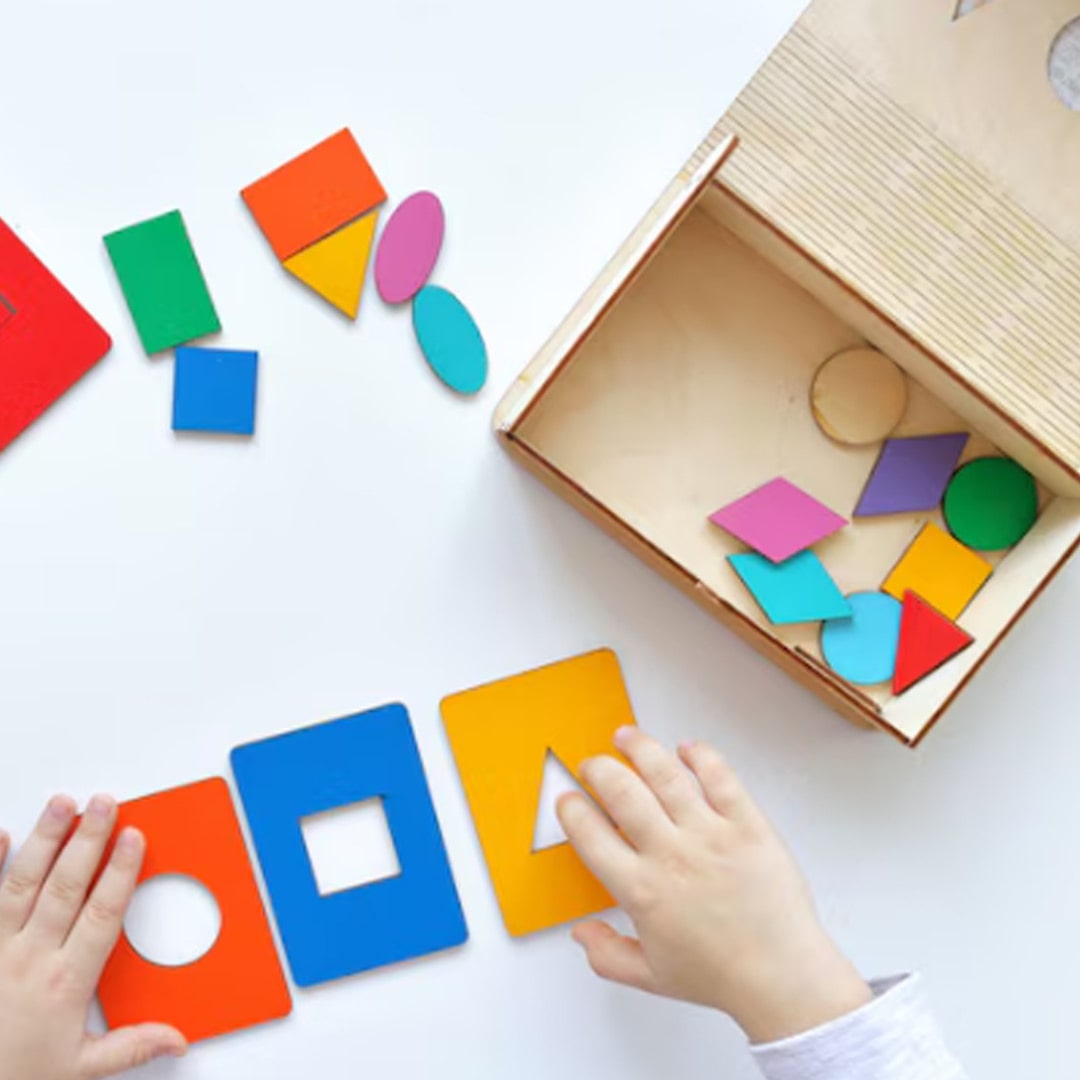Please enter the code we just sent to whatsapp 91-11-46710500 to proceed
Didn't Receive OTP?

Teaching shapes seems basic at first but young children need to learn geometric visual concepts similar to mastering alphabet basics. Basic geometric shapes like circles and squares with triangles serve as starting elements for both mathematical and artistic foundations. If you’ve ever wondered how to teach shapes to kids in a way that’s both fun and memorable, you’re not alone. The good news? Learning this material does not need to be similar to going to school. It can feel like play.
The importance of shapes serves as our starting point for understanding the teaching method. Learning shapes enables children to detect various types of information in their visual field while establishing order. Children learn the foundation that enables them to understand advanced academic subjects of math reading and science. In other words, teaching geometry to young learners isn’t just about naming a circle — it’s about helping children understand the world around them.
Children should start their learning journey with the shapes they encounter in their environment.
Kids are naturally curious. Young children observe the world with active perception that detects the numerous shapes existing all around them. The most effective approach to begin this instruction involves connecting geometric forms to familiar everyday items. Demonstrate to students that the sun has a circular shape pizza slices form triangular shapes and books show rectangle outlines.
This real-world connection is the first step in how to teach shapes to kids. Students find the learning experience more approachable because it reveals hidden knowledge about their favorite toys and snacks.
Books can be enchanting when learning. Select storybooks that focus on shapes or feature them as part of the illustrations. While reading, stop and identify the various shapes in the illustrations. Ask, "Can you spot a triangle on this page?" or "What shape is the door?"
Reading books such as "Mouse Shapes" or "Shape by Shape" not only enhances language abilities but also incorporates shape identification into a warm, enjoyable activity. It's a gentle yet effective way to introduce geometry to young children without them knowing it.
Let's be real—kids enjoy getting messy. Why not capitalize on that? Craft time is the best time to expose fun activities for learning shapes. Try these:
Shape Collage: Provide them with paper cutouts of various shapes and have them glue them into a creative picture (a house with triangular roofs, square windows, etc.).
Playdough Shapes: Allow children to roll and shape various shapes with their hands and cookie cutters.
Popsicle Stick Shapes: Challenge them to construct shapes with sticks or straws.
The best part? They're learning and being creative at the same time. This type of hands-on learning seals the concept more effectively than any worksheet ever could.
Some children learn most effectively when they are active. Take learning off the page and onto the floor! Create big shapes on the floor using painter's tape. Then shout, "Stand inside the circle!" or "Hop around the triangle!" Not only is this an excellent way to practice shape names and structure, but it also burns off a bit of that boundless kid energy.
This method is very effective if you're still trying to figure out how to teach shapes to children who do not sit still. It is one of the most active fun-shaped activities for learning at home or in a classroom.
Kids learn more when learning is play. And what's more playful than music? Singing shape songs like "The Shape Song Swing along" or "Shapes Are All Around" makes it fun and memory-worthy. You can even create your silly shape song together, naming them or their favorite animals.
Music makes it not only easier to teach geometry to young students but also more enjoyable.
We are a digital world now, and screen time, used wisely, can aid learning. There are enough educational apps and games that have been specifically made to educate on shapes using puzzles, animation, and interactive puzzles.
Nevertheless, balance is crucial. Utilize digital tools as an addition, not a substitution. Kids live on interactive and hands-on play, so intermix tech with old-school play.
After children are comfortable with simple shapes, you can play games anywhere, anytime. On the way to the park, ask, "How many rectangles can you see?" (Notice windows, benches, and signs.) Or at snack time, use foods of various shapes and have them guess what they're having.
These everyday moments are the secret ingredient in how to teach shapes to children—because repetition in daily life makes things stick automatically.
Most importantly, keep in mind this: all children learn at their rate. Some will identify and label shapes in an instant, while others might require gentle repetition and encouragement. Don't worry. Celebrate small victories, such as seeing a circle or drawing a triangle, with great big smiles and high-fives.
Because when you make learning something that they can be proud of, you're not only instructing geometry for young students—you're demonstrating to them that learning is fun, achievable, and theirs to claim.
Shapes surround us—and learning them doesn't have to be boring or structured. Through stories, songs, crafts, movement, and a little imagination, children will learn about squares and circles and also build confidence in their ability to learn.
So the next time you're in search of educational fun activities on shapes, go beyond the flashcards. Get creative, look around, and remember: those little hands and shining eyes are learning more than you know.
Alpha Math offers a game-based learning experience with a unique four-step approach to mastering every concept in math. Schedule a Free Class Now